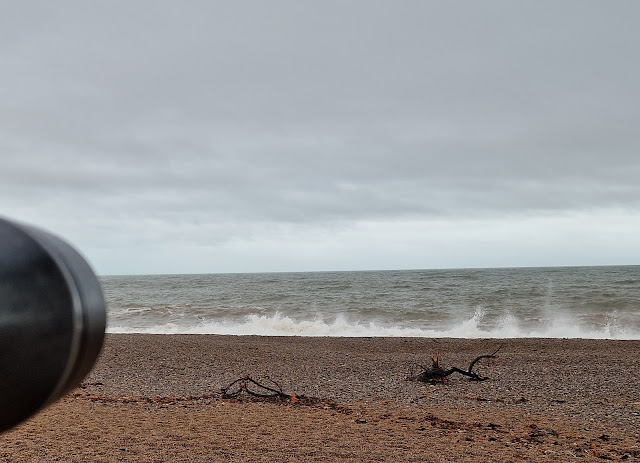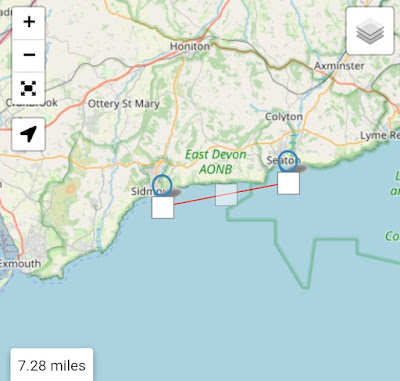Finally, finally, finally... bloody finally!
When I was starting out in birding in the late 90s and early 00's, enjoying frequent weekend birding trips out with Dad, the rule was you had to go west of the Exe Estuary to see a Cirl Bunting. Sometime in the mid to late 00's, Budleigh and Otter Head became home for an isolated small population, which has steadily increased in numbers since.
In 2019, just a few miles from our patch boundary, Cirl Buntings appeared around Weston and towards Sidmouth (see blog post HERE). They've remained in the area ever since but haven't obviously spread out, with no records within approx two miles of our western patch boundary at Branscombe. With them being SO close though we have been on the look out.
However our efforts have proved nothing but frustrating, despite seemingly having plenty of ideal habitat. They've even leap-frogged us, as are now present and breeding at several sites along the south coast of west Dorset, as far east as Portland Bill. They've even gone inland of us too, with a single male (possible two) present for a second year near Axminster. You really cannot blame us for feeling like we have some sort of Cirl deflective force field around our patch! Well that was up until eleven days ago anyway...
I really have not been out at all much this year, it has been extremely busy at work opening a new attraction in town. However on the morning of Monday 8th April I had a spare hour, and spent it traipsing around Axe Cliff Golf Course in the hope of turning up a Hoopoe or Woodchat Shrike. No such luck, but on the east side of the Golf Course as I was walking along a narrow hedge-lined track, a familiar rattle sounded out. It took me a while to see it, but there perched on the opposite side of the hedge right in front of me was an absolutely knock-out male Cirl Bunting, singing proudly. A patch tick!
Unfortunately however, as I went for my phone to grab a record shot/video it slipped away. I was convinced it was just going to pop up again somewhere nearby, but there's been no sight or sound during the ten days since! Gutting for everyone that missed it, but am sure it or another will surface soon. Well actually, another one already has, the very next day...
Local birder Leon came across a female Cirl Bunting on Beer Head on the 9th, and unlike me actually managed a pic, which I hope he doesn't mind me sharing here...
 |
| Female Cirl Bunting at Beer Head (c) Leon on 9th April 2024 |
So it looks like the force field is down! Hopefully it remains down and within a few years we will have breeding Cirl Buntings. I did always think that as soon as one shows up the flood gates would open.
I won't leave it so long before the next blog post. I have the whole of this spring to date to recap on, not that it has been anything that special - yet. For now though, have this Wheatear shot, a nice Iceland/Greenland male too...
 |
| Colyford Common - 14/4/24 |














